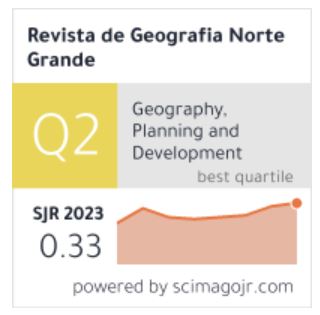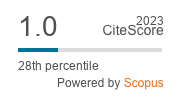Geomorphological indicators of paleodune fragility.
Keywords:
Coastal geomorphology, geomorphological indicators, ancients dune, erosionAbstract
The combined effect of the fragility of old coastal dunes due to its natural conditions and the human activities on dunes, produce their estabilization and the beginning of geomorphological processes that lead them to a rapid transformation and landscape degradation. The occurrence and the mechanism of these morphodynamic processes are precised in this paper. In essence, they are geomorphological indicators of the fragility of paleodunes of the littoral of central Chile. These indicators of fragility are rills and gullies (due to vertical erosion due to the rain) and mass movement that affect the stability slopes of the old fixed dunes. The determination of the fragility of these naturals environments, done through the geomorphological indicators, is of great utility in the definition of environmental units of territorial diagnosis for land evaluation urposes and for the physical planning of the coastal zone.
Downloads
References
CASTRO, C. 1984-85: Reseña del estado actual del conocimiento de las dunas litorales en Chile. Rev. Geogr.. de Chile Terra Australis, IGM, 28:13-32. CASTRO, C. y P. VICUÑA 1986: Man’s impact on coastal dunes in central Chile (32º-34ºS). Rev. Thalassas, Vol. 4 (1): 17-21. Vigo, España.
CAVIEDES, C. 1966: Las terrazas del curso inferior del río Aconcagua. Actas Tercer Encuentro Nacional de Geografía. UC. Valpo. pp. 1-12.
FUENZALIDA, H. 1956: Campos de dunas en la costa de Chile Central. XVIII. Congreso Intern. Río de Janeiro, pp. 234-240.
LOBOS, C. 1986: Determinación del monto de subsidio para rehabilitar suelos degradados en la zona de Paredones, VI Región. Tesis. Facultad de Ciencias Forestales U. De Chile. (Inédita).
PASKOFF, R. 1970: Recherches géomorphologiques dans le Chili semi aride. Biscaye, Bordeaux. Francia. (Tesis de Estado), p. 411.
MONETT, ÁLVARO 1995: “Procesos ambientales en las comunas de Valparaíso y Viña del Mar, los movimientos en masa y su impacto en las áreas urbanas”. Memoria Instituto de Geografía: Pontificia Universidad Católica de Chile (Inédita).
MOP. 1993: Unidad Técnica de Medio Ambiente. Pauta y guías metodológicas para la evaluación ambiental de proyectos del Ministerio de Obras Públicas:
Chile.
ZÚÑIGA, A. 2000: Diagnóstico de las condiciones ambientales que condicionan la estabilidad de laderas y la ocurrencia de movimientos en masa. Caso de
estudio: Franja costera de Zapallar, región de Valparaíso. Memoria: Instituto de Geografía, Pontificia Universidad Católica de Chile. (Inédita, esta memoria se efectuó en el marco del proyecto Fondecyt Nº 1990586).






